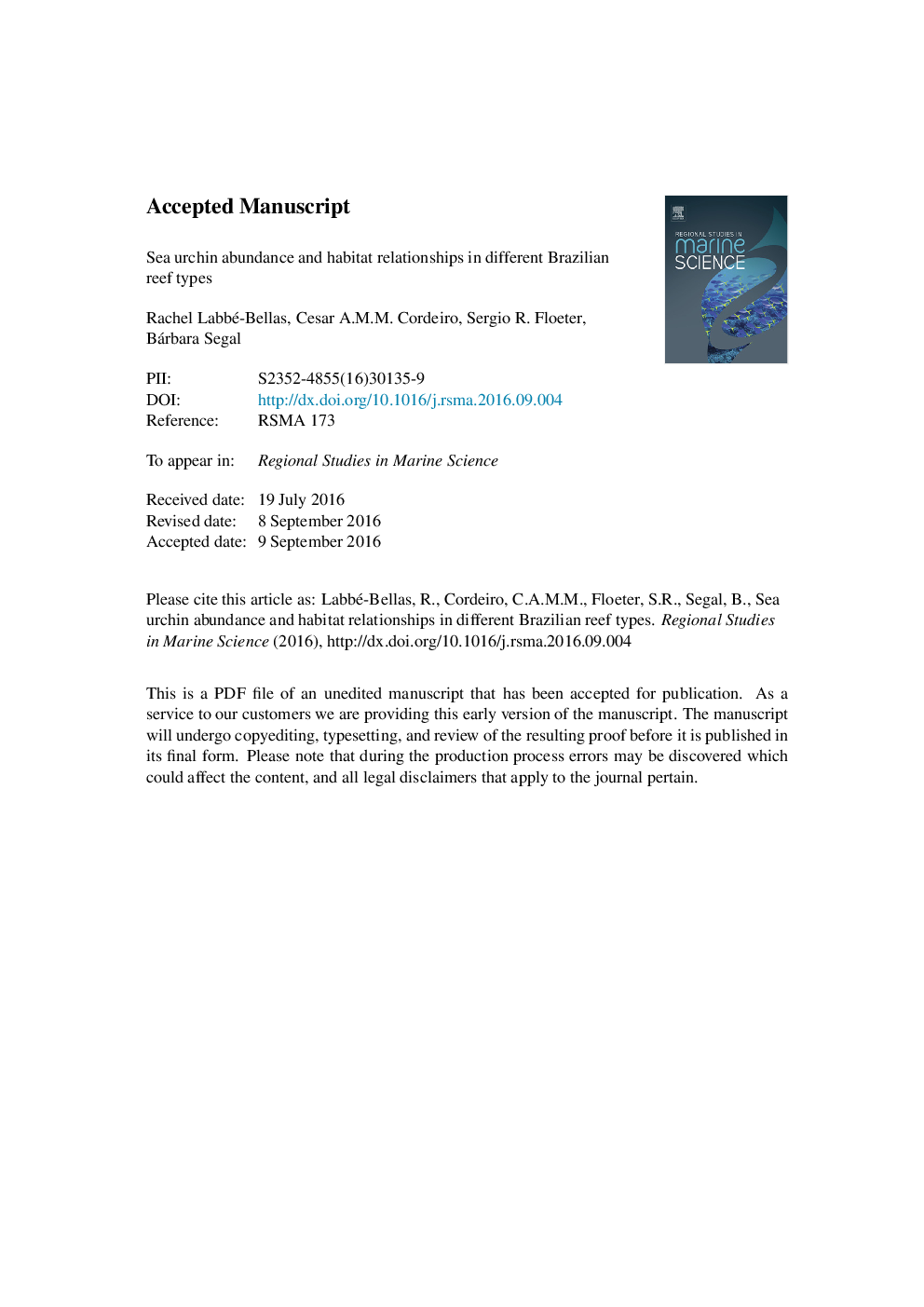| Article ID | Journal | Published Year | Pages | File Type |
|---|---|---|---|---|
| 5758122 | Regional Studies in Marine Science | 2016 | 19 Pages |
Abstract
Sea urchins exhibit close linkages with the substrate, derived from their life habits such as locomotion and feeding. The main objectives of this study were to evaluate the distribution and abundance patterns of urchins and their relationships with habitat characteristics (habitat complexity, depth, and benthic percent cover) at the microhabitat scale in Brazilian reefs. In situ sampling was performed during scuba diving, using 0.5mx0.5m quadrat counts and the percent cover of the microhabitat variables. Six species of urchins were found in subtropical reefs (Santa Catarina), including a new record of the species Tripneustes ventricosus. At the tropical coral reef (Recife de Fora) four species were found but E. lucunterwas by far the most abundant species (12.7±1.1 ind.mâ2). At the subtropical rocky reefs, E. lucuntermean density in shallow areas was 5.12±2.1 ind.mâ2. Other species were also representative in these reefs, such as Arbacia lixula (1.67 ind.mâ2) and Paracentrotus gaimardi (1.34 ind.mâ2). The structure of the assemblages of sea urchins was different between biogenic and rocky reefs, with the latter showing higher species richness but lower abundances of sea urchins. Despite intrinsic differences in studied reefs, the sea urchins abundance was mainly related to structural complexity (reef building organisms, holes and crevices) indicating that, in general, the reef spatial structure is crucial to sea urchin species due to direct and indirect resources provided.
Related Topics
Physical Sciences and Engineering
Earth and Planetary Sciences
Oceanography
Authors
Rachel Labbé-Bellas, Cesar A.M.M. Cordeiro, Sergio R. Floeter, Bárbara Segal,
